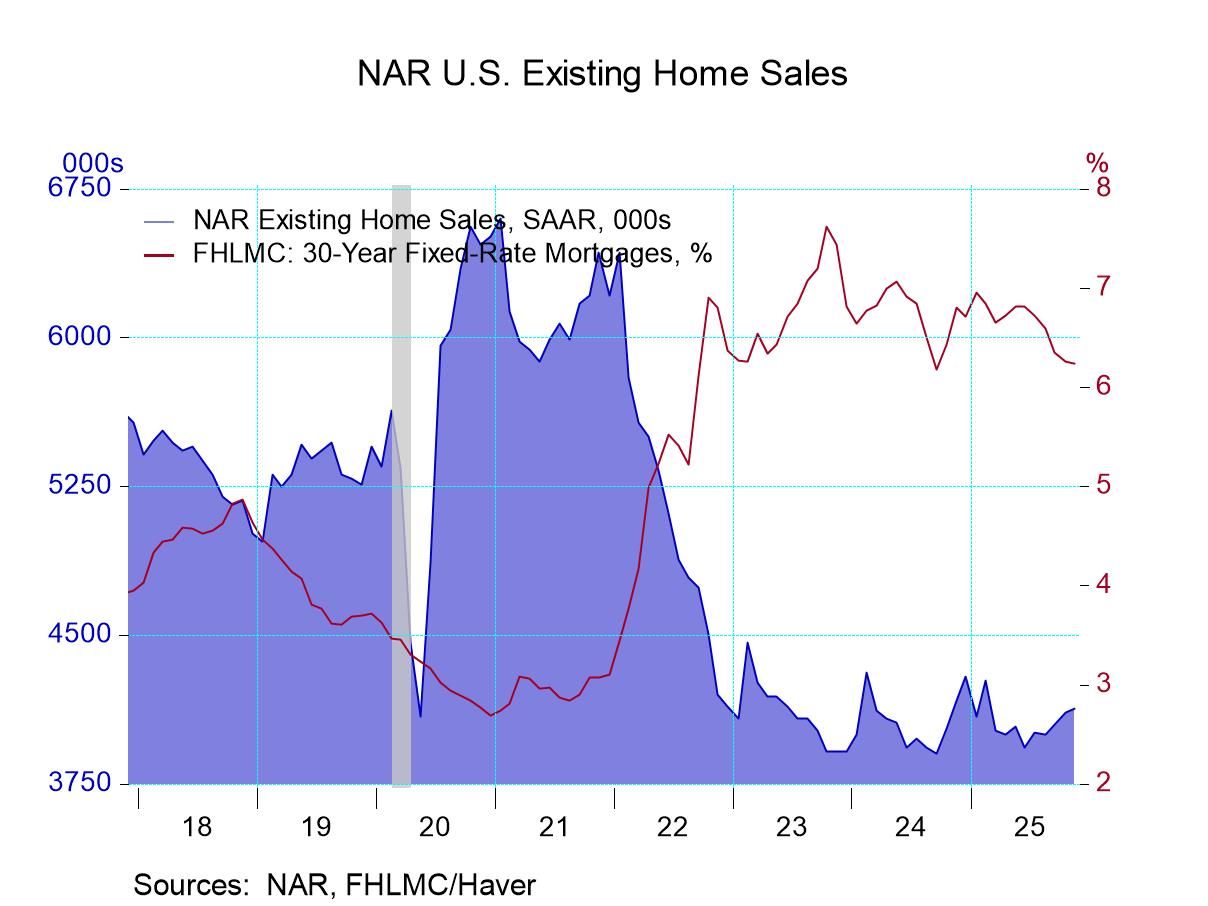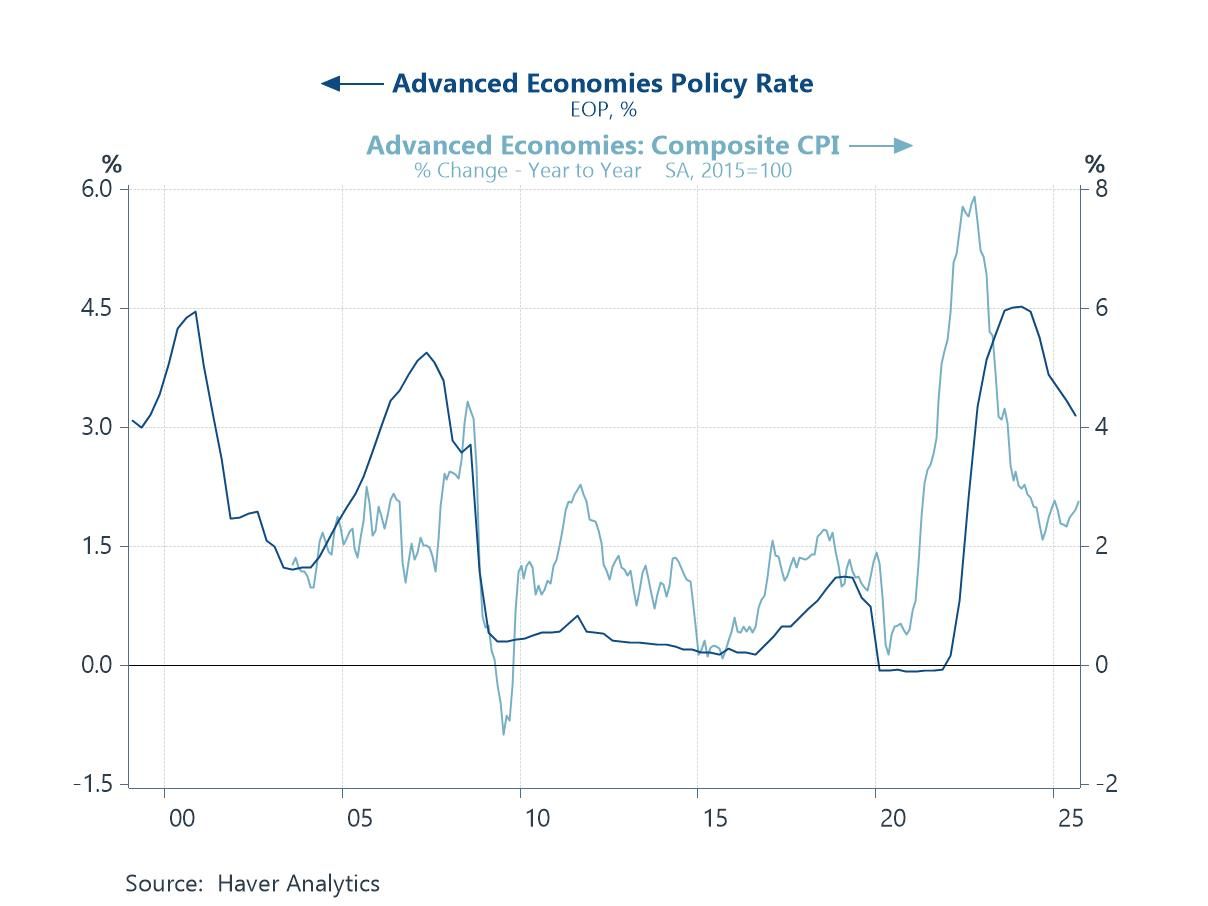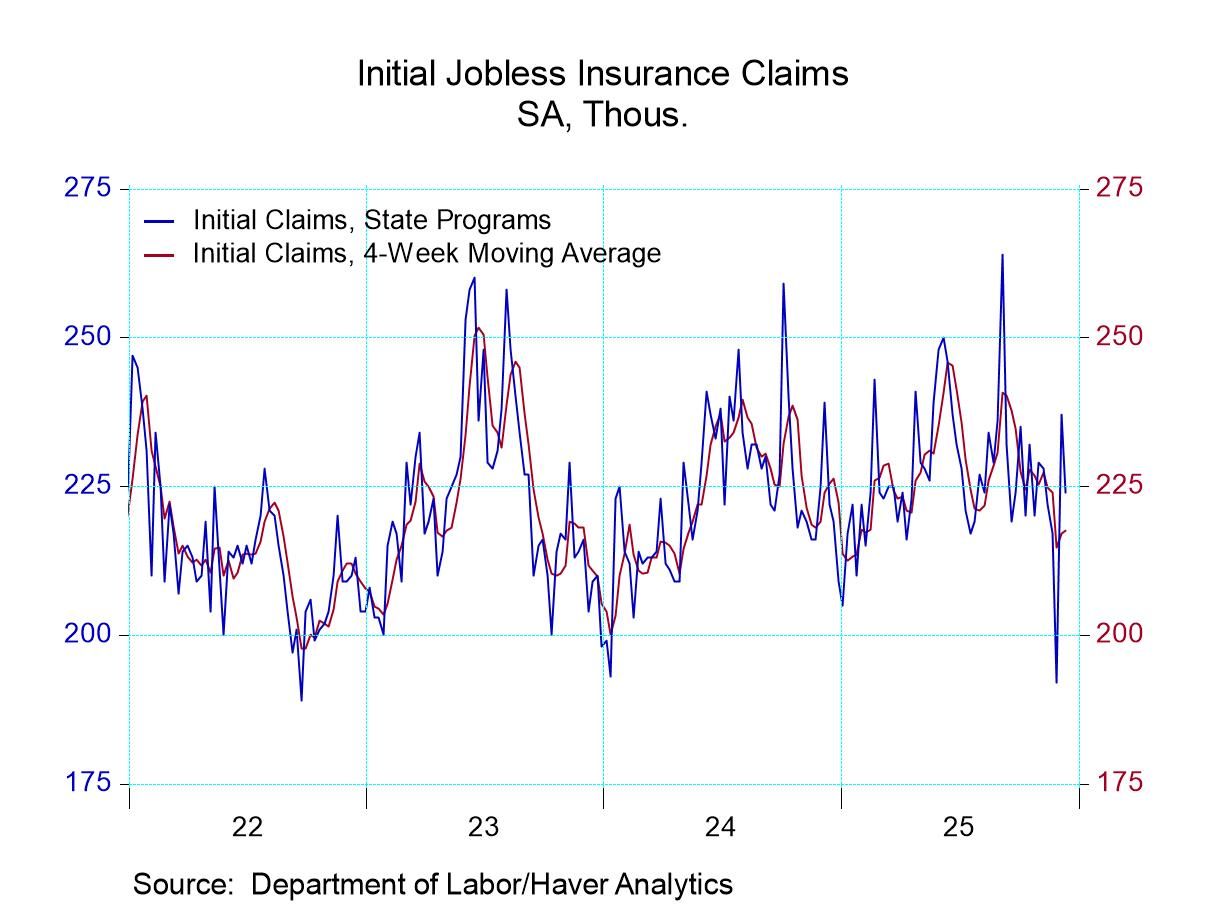U.S. Initial Unemployment Insurance Claims Fall in Latest Week
by:Tom Moeller
|in:Economy in Brief
Summary
- Unexpected decline to lowest level since mid-May.
- Continuing claims continue to rise.
- Insured unemployment rate remains elevated.


Initial claims for unemployment insurance declined to 227,000 (+2.3% y/y, SA) in the week ended July 5, from 232,000 in the previous week, which was revised from 233,000. Initial claims have declined for four straight weeks. The Action Economics Forecast Survey expected 234,000 initial claims for last week. The four-week moving average of initial claims weakened to 236,000 from 241,000. It was the lowest level since the last week of May.
In the week ended June 28, the total number of unemployment insurance beneficiaries – also known as “continuing claims” – rose to 1.965 million (5.9% y/y) in the last week of June after easing to 1.955 million in the prior week. The figure has risen sharply since a low of 1.833 million in the second week of April.
At the end of June, the insured rate of unemployment (the number of beneficiaries as a percent of covered employment) was 1.3% for the fifth straight week. It has increased from 1.2% since the beginning of 2023 and 1.0% in November 2022.
The insured unemployment rate varied greatly across individual states and territories. In the week ended June 21, the highest unemployment rates were in New Jersey (2.27%) California (2.15%), Washington (2.02%), Massachusetts (1.94%) and Pennsylvania (1.83%). The lowest were in South Dakota (0.28%), Florida (0.39%), Alabama (0.49%) and Virginia & Kentucky, both at 0.53%. Rates in other notable states include Tennessee (0.60%), Texas (1.25%) and Illinois (1.67%). These state data are not seasonally adjusted.
Data on weekly unemployment claims are from the Department of Labor itself, not the Bureau of Labor Statistics. They begin in 1967 and are contained in Haver’s WEEKLY database and summarized monthly in USECON. Data for individual states are in REGIONW back to December 1986. The expectations figure is from the Action Economics Forecast Survey in the AS1REPNA database.


Tom Moeller
AuthorMore in Author Profile »Prior to joining Haver Analytics in 2000, Mr. Moeller worked as the Economist at Chancellor Capital Management from 1985 to 1999. There, he developed comprehensive economic forecasts and interpreted economic data for equity and fixed income portfolio managers. Also at Chancellor, Mr. Moeller worked as an equity analyst and was responsible for researching and rating companies in the economically sensitive automobile and housing industries for investment in Chancellor’s equity portfolio. Prior to joining Chancellor, Mr. Moeller was an Economist at Citibank from 1979 to 1984. He also analyzed pricing behavior in the metals industry for the Council on Wage and Price Stability in Washington, D.C. In 1999, Mr. Moeller received the award for most accurate forecast from the Forecasters' Club of New York. From 1990 to 1992 he was President of the New York Association for Business Economists. Mr. Moeller earned an M.B.A. in Finance from Fordham University, where he graduated in 1987. He holds a Bachelor of Arts in Economics from George Washington University.





 Global
Global
